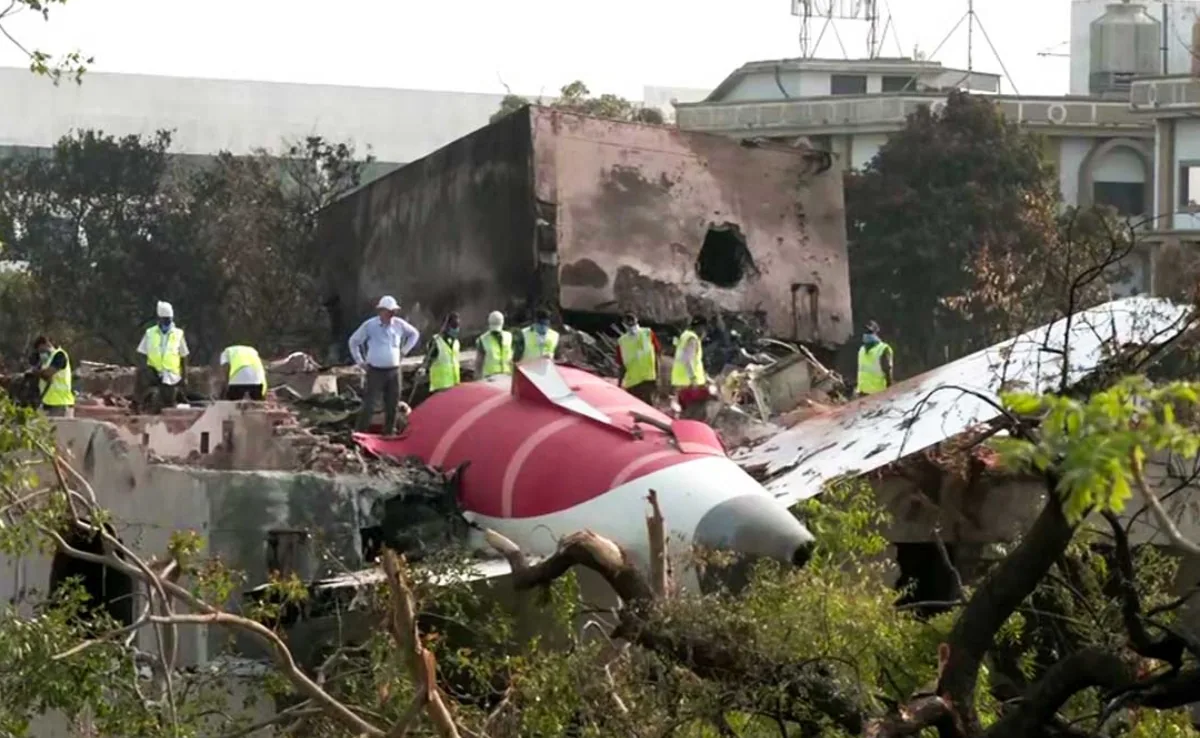Mass Casualty in Ahmedabad: Repercussions of the Air India Tragedy
In a harrowing incident that has shocked the nation, Air India flight AI-171 met with disaster just moments after takeoff from Ahmedabad, resulting in the loss of 241 lives among the 242 individuals onboard. This tragedy marks the deadliest aviation disaster in India in over 15 years, reigniting debates about air travel safety and emergency response protocols. The unfortunate event unfolded shortly after 1:39 PM on a day that was expected to be routine for many flying to London Gatwick.
The flight’s distress was first communicated by the pilots through a “Mayday” call to Air Traffic Control (ATC) when the aircraft failed to gain altitude beyond 650 feet. Despite their quick response, ATC could not establish further contact, as the aircraft tragically crashed mere moments later. The aftermath saw the Boeing 787-8 Dreamliner plummet into a hostel that housed college students, igniting a fireball that would eventually claim the lives of all but one individual aboard.
Details of the Incident
The tragic incident raises troubling questions surrounding aviation safety protocols and the aircraft’s readiness. According to reports from the Aviation Ministry, the pilots Captain Sumeet Sabharwal and First Officer Clive Sundar issued their final calls mere seconds after takeoff. Eyewitness accounts and official statements indicate that the aircraft lost altitude rapidly within one minute, crashing approximately two kilometers from the airport in Medhaninagar. The quick notifications to emergency services saw local hospitals inundated with both the deceased and injured, many of whom sustained severe burns from the wreckage.
The immediate aftermath of the crash involves an extensive search and recovery operation, with more than 100 workers and 40 engineers deployed to sift through the wreckage. Aviation experts are currently speculating on the probable causes of the disaster. Visual evidence suggests possible mechanical failure, particularly in the thrust capabilities of both engines, while a bird strike is also being considered as a contributing factor. Recovery teams are actively working to stabilize the area and initiate investigations into these causes.
The circumstances surrounding the air tragedy are particularly striking given that the affected aircraft had successfully completed a sector from Paris to Delhi prior to its ill-fated journey from Ahmedabad. As per the report by NDTV, officials within the Aviation Ministry asserted that there were no prior indications of mechanical issues, complicating the narrative of the tragedy further. The black box of the aircraft has since been recovered, promising potential insights into the events leading up to the crash.
A Significant Loss
This catastrophic event has not only claimed lives but has also left a significant emotional and psychological impact on the families of the victims, as well as on the broader community. Among those who tragically lost their lives was former Gujarat Chief Minister Vijay Rupani, highlighting the extensive reach of this tragedy. With 241 people confirmed dead and only one survivor—a UK national of Indian origin—the familial pain is immense, and the government has promised to support the grieving families.
While the focus remains on immediate recovery and support for victims’ families, authorities are also juxtaposing this tragedy with past aviation incidents in India. The last significant disaster occurred in May 2010, when an Air India Boeing 737 tragically overshot a runway, resulting in 158 fatalities. Such historical context amplifies the current concerns regarding aviation safety in India, especially among the flying populace.
Experts are urging a thorough review of the data collected from the recently recovered black box, which could provide critical insights into pilot communication, environmental conditions at the time of the crash, and potential equipment failures. Investigating protocols on safety training for pilots and emergency response tactics will also likely come under scrutiny as the nation grapples with the implications of this calamity.
Community Response and Government Action
In the wake of the crash, community reactions have ranged from shock to sorrow. Local organizations and individuals have come forward to extend their condolences, while several NGOs are mobilizing to provide psychological support to families affected by the tragedy. The government’s response has been swift in terms of launching investigations, but many urge further action to ensure such disasters are prevented in the future.
The incident also raises questions about the state of aviation infrastructure in India. Critics argue that while air travel becomes increasingly popular, regulatory bodies must ensure that airlines comply with rigorous safety standards and protocols that exceed mere compliance with international guidelines. Calls for improved technological investments in aviation safety and better training for emergency situations are likely to grow in the coming weeks.
In light of these events, the public and aviation experts alike are asking for transparency in the investigative process. The hope is that lessons learned from this tragedy will lead to fundamental changes within the aviation sector, ensuring that safety remains the top priority in the face of burgeoning air travel demand.
While our hearts go out to the victims of Air India flight AI-171 and their families, we remain hopeful that an in-depth inquiry will provide some clarity and, hopefully, prevent such tragedies in the future.
DISCLAIMER
We have taken every measure to ensure that the information in this article and on our social media platforms is accurate, verified, and obtained from reliable sources. For feedback or complaints, please contact us at info@hamslive.com.


